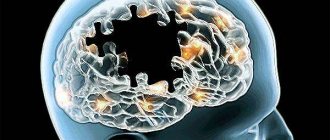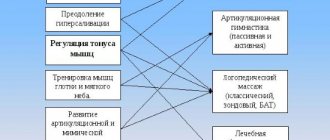Why should everyone go through an age crisis?
It is worth remembering that with physical growth comes also the development of the nervous system, which in children is still so unstable. Learning new skills, such as walking and talking, and then going to kindergarten or school can significantly undermine it. Crises of different ages manifest themselves in different ways. But only after going through this can a child develop a balanced psyche and learn not to keep negative emotions to himself.
Such a difficult period should not frighten parents, because it means that the child is developing correctly. Psychologists often consider the absence of crisis periods to be abnormal; in their opinion, this may indicate a developmental delay. Only in very complex conditions that interfere with normal life activities should you contact a specialized specialist. He will give recommendations to normalize the situation.
Age-related personality crises
Based on S. Freud's ideas about human psychosexual development, E. Erikson (Erikson, 1950) developed a theory that emphasizes the social aspects of this development. It is considered as a process of integration of individual biological factors with factors of education and sociocultural environment.
According to Erikson, a person experiences eight psychosocial crises throughout his life, specific to each age, the favorable or unfavorable outcome of which determines the possibility of subsequent personal flourishing.
A person experiences the first crisis in the first year of life. It is related to whether or not the basic physiological needs of the child are satisfied by the person caring for him. In the first case, the child develops a feeling of deep trust in the world around him, and in the second, on the contrary, distrust of it.
The second crisis is associated with the first learning experience, especially with teaching the child to be clean. If parents understand the child and help him control natural functions, the child gains the experience of autonomy. On the contrary, too strict or too inconsistent external control leads to the development of shame or doubt in the child, mainly associated with the fear of losing control over his own body.
The third crisis corresponds to the second childhood. At this age, the child’s self-assertion occurs. The plans that he constantly makes and which he is allowed to implement contribute to the development of his sense of initiative. On the contrary, experiencing repeated failures and irresponsibility can lead him to resignation and feelings of guilt.
The fourth crisis occurs at school age. At school, a child learns to work in preparation for future tasks. Depending on the atmosphere prevailing in the school and the adopted methods of education, the child develops a taste for work or, on the contrary, a feeling of inferiority, both in terms of the use of means and opportunities, and in terms of his own status among his comrades.
The fifth crisis is experienced by teenagers of both sexes in search of identification (learning patterns of behavior of other people significant to the teenager). This process involves integrating the adolescent's past experiences, his potential capabilities, and the choices he must make. The adolescent's inability to identify or difficulties associated with it may lead to identity disintegration or confusion of the roles that the adolescent plays or will play in the affective, social and professional spheres.
Formation of identity presupposes the teenager’s acceptance of the value system existing in society. It happens that for some reason society cannot offer a worthy holistic system of highest values. Deprivation of higher values is one of the main causes of existential frustration in a person of any age. In adolescence, this deprivation, as well as some other deprivation factors, cause an existential (meaning in life) crisis, which can lead to neuroses, depression, attempts to solve problems by using alcohol, drugs, and even suicide. It is possible to form self-determination according to a negative scenario: joining criminal groups, getting involved in pseudo-religious movements, etc. Another option is an unwillingness to solve existential problems, an escape from them (“diffusion of identity”, according to E. Erikson), which manifests itself in infantilism.
The sixth crisis is characteristic of young adults. It is associated with the search for intimacy with a loved one, with whom he will have to go through the cycle of “work - having children - rest” in order to ensure proper development for his children. The lack of such experience leads to isolation of a person and his isolation on himself.
In youth, a person is focused on getting a profession and starting a family. The main task of age, according to E. Erikson, is to learn to communicate with people, build close relationships, without fear of losing one’s identity. The roots of existential deprivation lie in the contradiction of two tendencies. On the one hand, a person at this age has a desire to build close relationships, on the other hand, there is a desire to protect “his territory”, his “I”. The latter can lead to avoidance of interpersonal relationships and excessive self-absorption, which is the psychological basis for feelings of loneliness, existential vacuum and social isolation.
The crisis of 30 years is sometimes called the crisis of the meaning of life. In fact, this is the first period when a person asks the question about the correctness of his existence, namely: does his life correspond to his essential motives? And if there is no positive answer or these motives are not defined, a deep feeling of loss of meaning arises, associated with a feeling of emptiness.
The seventh crisis is experienced by a person at the age of forty. It is characterized by the development of a sense of preserving the race (generativity), expressed mainly in “interest in the next generation and its upbringing.” This period of life is characterized by high productivity and creativity in a variety of areas. If, on the contrary, the evolution of married life follows a different path, it can freeze in a state of pseudo-intimacy (stagnation), which dooms the spouses to exist only for themselves with the risk of impoverishment of interpersonal relationships.
The crisis of 40 years (or mid-life crisis) is considered one of the most striking and significant. A person evaluates his life to determine whether he correctly understood and realized the real purpose of his life. This is a period when existential problems appear in all their severity. In the face of approaching old age and the impossibility of radically changing anything, such reflection can lead to depression, neuroses, etc. During this period, some try to “start living again”, gain new meanings, trying to get out of the state of existential deprivation.
The eighth crisis is experienced during aging. It marks the completion of the previous life path, and the resolution depends on how this path was passed. A person’s achievement of integrity is based on summing up his past life and realizing it as a single whole, in which nothing can be changed. If a person cannot bring his past actions into a single whole, he ends his life in fear of death and in despair from the impossibility of starting life again.
Existential deprivation (loss of meaning in life) is characteristic not only of periods of age-related crises. It may be determined by the individual characteristics of a person’s life.
The situation of globalization in the modern world leads to the deprivation of the existential needs of a significant part of the population, including young people. The lack of a common, stable system of values, the ineffectiveness of the law, the difficulties of economic adaptation - all this creates a value vacuum and leads to a loss of meaning. As a consequence, the emergence of “alternative” values, realized in the form of criminal activity, including so-called ideological associations - skinheads, etc.
For eras of change, the words of E. Fromm are most suitable that human aggressiveness is provoked not so much by the emancipation of instincts, but by the suppression of existential needs: for freedom, for a sense of identification, for value orientations and an object of veneration, for a sense of historical roots, for a sense of unity , the opportunity to realize their creative abilities.
Age most suitable for crises
Basically, most children suffer from this scourge at the same periods of life. This is due to the stages of development of the nervous system. There are several periods that you need to pay close attention to. This is a crisis:
- One year.
- Two years.
- Three years old.
- Sexennial.
Then we can talk about teenage problems, which require a special approach and separate consideration. Knowing the age when your child is most sensitive to the environment can significantly shorten this period and make it the least noticeable for both the baby and the parents.
Age crises article on correctional pedagogy on the topic
Age crises
The concept of age includes a number of aspects: 1) Chronological age, determined by a person’s life expectancy (according to the passport); 2) Biological age - a set of biological indicators, the functioning of the body as a whole (circulatory, respiratory, digestive systems, etc.); 3) Psychological age is a certain level of mental development, which includes: a) mental age To determine the mental age of children from 4 to 16 years old, the Wechsler test is used, which includes verbal and data in a visual (figurative) form of a task. When using it, a total “general intellectual indicator” is obtained. The psychologist calculates IQ - intellectual quotient: mental age x 100% IQ = chronological age b) social maturity - SQ - social intelligence (a person must be adapted to the environment that surrounds him) c) emotional maturity: free-will of emotions, balance, personal maturity. In real life, the individual components of age do not always coincide.
Age-related crises L.S. Vygotsky identified relatively stable, stable ages when development occurs mainly due to microscopic changes in the child’s personality. Stable ages are separated by crises, during which sharp and major shifts and shifts, changes and fractures in the child’s personality are concentrated over a relatively short period of time. Critical periods are turning points in development. Features of crisis periods: 1. The boundaries separating the beginning and end of the crisis from adjacent ages are unclear. A sharp aggravation of the crisis is characteristic, usually occurring in the middle of this age period. 2. A significant proportion of children experiencing critical periods of development are difficult to educate. At critical ages, the development of a child is often accompanied by more or less acute conflicts with others. The inner life of a child is sometimes associated with painful and painful experiences, with internal conflicts. However, all this is not necessarily the case; different children experience critical periods in different ways. 3. The negative nature of development, which does more destructive than creative work. The processes of death and coagulation, disintegration and decomposition of what was formed at the previous stage and distinguished a child of a given age are brought to the fore. In total, the following crises are distinguished: - neonatal crisis (infancy: 2 months - 1 year); - crisis of one year (early childhood: 1 year - 3 years); - crisis 3 years (preschool age: 3 years - 7 years); - crisis 7 years (school age: 8 years - 12 years); - crisis of 13 years (pubertal age: 14 years - 18 years); - crisis of 17 years. The crisis of 7 years was discovered and described earlier than others. Later, the 3-year-old crisis was discovered and described. Even later, the crisis of 13 years was studied. The most recent crisis discovered was one year old.
The most essential content of development at critical ages is the emergence of new formations (L.S. Vygotsky). Around the main (central) neoplasm of a given age, all other partial neoplasms related to individual aspects of the child’s personality, and developmental processes associated with neoplasms of previous ages, are located and grouped. Once new formations arise in the conscious personality of a child, this personality itself changes. The new structure of consciousness acquired at a given age inevitably means a new nature of perception of external reality and activity in it, a new nature of perception of the inner life of the child himself and the internal activity of his mental functions. As a result of age-related development, new formations that arise towards the end of a given age lead to a restructuring of the entire structure of the child’s consciousness and thereby change the entire system of his relations to external reality and to himself.
Social situation of development (L.S. Vygotsky) By the beginning of each age period, a completely original, specific for a given age, exclusive, unique and inimitable relationship develops between the child and the reality around him, primarily social. Changes in the child’s consciousness arise on the basis of a certain form of his social existence characteristic of a given age. The previous developmental situation disintegrates as the child develops, and just as commensurate with his development, a new developmental situation takes shape in its main features, which should become the starting point for the next age.
Zone of proximal development (L.S. Vygotsky) The child’s interaction with the social environment is not a factor, but a source of development. In other words, everything a child learns should be given to him by the people around him. It is important that learning (in the broadest sense) proceeds ahead of schedule. A child has a certain level of actual development (for example, he can solve a problem independently, without the help of an adult) and a level of potential development, that is, in cooperation with an adult. The zone of proximal development is what a child is capable of, but cannot do without the help of adults. All training is based on the principle of taking into account the zone of proximal development, ahead of actual development.
Leading activity (A. Leontyev, D.B. Elkonin) is an activity with which the emergence of the most important mental neoplasms is associated. It is characterized by the fact that other types of activity arise and differentiate in it, basic mental processes are restructured and changes occur in the psychological characteristics of the individual at a given stage of its development. Each age period has a clearly defined leading activity. The content and form of leading activity depends on the specific historical conditions in which the child’s development takes place. The change in leading types of activity takes a long time to prepare and is associated with the emergence of new motives that are formed within the leading activity that precedes a given stage of development, and which encourage the child to change the position he occupies in the system of relationships with other people. The emergence of a new leading activity does not mean the disappearance of the one that was leading at the previous stage.
Leading higher mental function (L.S. Vygotsky). Distinctive features of higher mental functions: - mediation, - awareness, - arbitrariness, - systematicity; - they are formed intravitally; - they are formed as a result of mastering special tools, means developed during the historical development of society; - the development of external mental functions is associated with learning in the broad sense of the word, it cannot occur otherwise than in the form of assimilation of given patterns, therefore this development goes through a number of stages. The specificity of child development is that it is subject to the action of socio-historical laws. The biological type of development occurs in the process of adaptation to nature by inheriting the properties of the species and through individual experience. A person does not have innate forms of behavior in the environment. Its development occurs through the appropriation of historically developed forms and methods of activity. Human consciousness is not the sum of individual processes, but a system, their structure. No function develops in isolation. The development of each function depends on what structure it is included in and what place it occupies in it. Thus, at an early age, perception is at the center of consciousness, at preschool age - memory, at school age - thinking. All other mental processes develop at each age under the influence of the dominant function in consciousness. The process of mental development consists of a restructuring of the systemic structure of consciousness, which is caused by a change in its semantic structure, that is, the level of development of generalizations. Entry into consciousness is possible only through speech and the transition from one structure of consciousness to another is carried out thanks to the development of the meaning of the word, in other words, generalization.
The relationship between external social conditions and internal conditions for the maturation of higher mental functions determines the general movement of development (V.S. Mukhina).
3 – 6/7 years: preschool age
Crisis of 3 years (crisis of social relations, formation of the child’s self-awareness) Reasons: A tendency towards independent activity arises: adults are no longer closed to the child by the object and way of acting with it, but, as it were, open up to him for the first time, acting as carriers of patterns of actions and relationships in the environment world. The phenomenon “I myself” means not only the emergence of outwardly noticeable independence, but also at the same time the separation of the child from the adult. As a result of this separation, adults appear, as it were, for the first time in the world of children's lives. The world of children's life from a world limited by objects turns into the world of adults. Manifestations: Interest in his image in the mirror (the child is puzzled by his appearance, interested in how he looks in the eyes of others). Negativism. All the child’s behavior goes against what adults offer him. Negativism is such manifestations in a child’s behavior when he does not want to do something just because one of the adults suggested it. Should be distinguished from disobedience. Stubbornness. A child insists on something not because he wants, but because he demanded it, he is bound by his original decision. Here a personality is highlighted and a demand is made that this personality be taken into account. To be distinguished from persistence. Obstinacy. Close to negativism and stubbornness, but has specific characteristics. Obstinacy is more generalized and more impersonal in nature. This is a protest against the order that exists at home: against the norms of upbringing, the way of life that developed before the age of three. Self-will: the desire for emancipation from an adult. The child himself wants to do something. We are talking about the independence of intention and design. Devaluation of adults: the child begins to swear, tease and call parents names. Protest-rebellion, which manifests itself in frequent quarrels with parents. The child is in a state of war and conflict with others. The desire for despotism. The child forces his parents to do everything he demands. In relation to younger sisters and brothers, despotism manifests itself as jealousy. Meaning (new formation): 1. There is a tendency towards independent activity, at the same time similar to the activity of an adult - after all, adults act as models for the child, and the child wants to act like them. 2. The child has some desires that arise and acquire their own dynamics of development. The child learns the difference between “should” and “want”.
Preschool age 3-6 (7) years New formations Arbitrariness of behavior A subordination of motives arises: deliberate actions predominate over impulsive ones, the child’s behavior is mediated by certain ideas and rules. Formation of self-awareness He is aware of himself and treats himself as a physical, spiritual, social being. Internal, ethical authorities arise, general ideas about nature and the world are formed - a worldview is formed. Self-esteem is actively developing. Readiness complexes for schooling: Communicative readiness Can interact with people according to rules and norms. Begins to understand that their peers and adults do not always feel and experience the way they do. By the age of 6-7 years, the sphere of human relationships is divided into normative (in activities) and human (in relation to activities). The latter are of a controlling nature in relation to the former; in them, norms are placed under individual control. Cognitive readiness The level of development of cognitive processes: attention, thinking, memory, imagination. Formation of figurative thinking, which allows him to think about objects, compare them in his mind even when he does not see them. Level of emotional development Overcomes situational emotions, culturally manages feelings. In older preschool age, they cope with aggressiveness. Technological equipment A minimum of knowledge, abilities, skills (KN: ability to read, count, write) that allow them to study at school. Imagination. Personal readiness Manifests itself in self-actualization. For girls - in the form of attractiveness, for boys - in the form of efficiency. Under the influence of these two factors, preschoolers develop the basic personality structures: 1) personality aspirations; 2) Self-concept; 3) personality perspectives; 4) hierarchy of motivations. Social situation of development Mastering social norms, relationships between people Communicating with adults and peers, the child learns to reflect on another person, develops the ability to identify with people, fairy-tale characters, toys, images, etc. Learns accepted positive forms of communication that are appropriate in relationships with other people, advances in the development of verbal and emotional communication. Leading activity Role-playing game The game itself begins at 3 years old: copying the actions and behavior of adults. Toys are models of objects that adults “play” with – a story game. In middle preschool age, role-playing play prevails until the age of 6-7 years. The point of the game is to separate roles. In older preschool age, play according to the rules appears, and roles become purely playful. The form of communication between children is non-situational and personal (occurs against the backdrop of play as a leading activity; the need for mutual understanding and empathy of an adult, since the coincidence of the child’s opinions and assessments with the views of elders is a criterion for the correctness of these assessments; the leading motive for communication is personal). Leading mental functions Memory Arises intentional memorization for the purpose of subsequent reproduction, high level of mechanical memorization Attention Volume, stability increases, elements of voluntary attention appear Visual-figurative thinking Improving visual-effective thinking on the basis of developing imagination; improvement of visual-figurative thinking based on voluntary and indirect memory; the beginning of the active formation of verbal-logical thinking through the use of speech as a means of setting and solving intellectual problems.
6/7 – 10/11 years: junior school age
Crisis of 7 years (crisis of self-regulation, birth of the child’s social “I”) Reasons: 1. The emergence of personal consciousness, the beginning of differentiation of the internal and external sides of the child’s personality. 2. Transition to a new social situation - the position of a schoolchild. The child comes to realize his place in the world of social relations. Manifestations: 1. Loss of childish spontaneity: Between desire and action wedges the experience of what meaning this action will have for the child himself. For the first time, an emotional and semantic orienting basis for the action appears. 2. Manners, capriciousness, the child does not walk the way he walked before. Something deliberate, absurd and artificial appears in behavior, some kind of fidgeting, clowning, clowning; the child pretends to be a buffoon. 3. A meaningful orientation in one’s own experiences arises: the child begins to understand what “I am happy”, “I am sad”, “I am angry”, “I am kind”, “I am angry” means. − Experiences acquire meaning (an angry child understands that he is angry). − For the first time, a generalization of experiences, or an affective generalization, a logic of feelings appears. That is, if some situation has happened to him many times, he develops an affective formation, the nature of which also relates to a single experience, or affect, as a concept relates to a single perception or memory. - An acute struggle of emotions arises. Experience is the internal attitude of a child as a person to a particular moment of reality. 4. Such formations as pride and self-esteem arise. The level of our demands on ourselves, on our success, on our position arises in connection with the crisis of seven years. The basic need is respect: the child expresses a claim to respect, to be treated as an adult, to recognition of his sovereignty. 5. The phenomenon of “bitter candy”: the child achieves his goal, but does not feel pleasure from it, because he achieved it in a socially disapproved way. 6. Parenting difficulties arise. The child begins to withdraw and becomes uncontrollable. Meaning (new growth): 1. The emergence of inner life. Now the orientation of behavior will be carried out within this inner life. 2. Transition from egocentrism to decentration. 3. Formation of voluntary behavior. Mastering the means and standards of cognitive activity.
Primary school age 6 (7) - 10 (11) years Neoplasms Arbitrariness of all mental processes except intelligence By the age of 7, the cerebral cortex is largely mature, but specific human parts of the brain responsible for programming, regulation and control of complex forms of mental activity have not yet completed their formation, as a result of which the regulating and inhibitory influence of the cortex on the subcortical structures is insufficient. The child gradually masters his mental processes, learns to control attention, memory, and thinking. Personal reflection Between the ages of 9 and 12, the desire to have one’s own point of view on everything continues to develop. Judgments about one’s own social significance appear—self-esteem, which is formed through the development of self-awareness and feedback from those around them whose opinions they value. Completion of the development of self-awareness. Intellectual reflection; internal plan of action A mechanism for correcting one’s thinking from the side of logic and theoretical knowledge arises: the child becomes able to subordinate the intention to an intellectual goal, is able to maintain it for a long time. Social situation of development The child is a “social” subject A new place in the social space of human relations (“social role” schoolboy"). They spend more time with peers, often of the same gender. Conformity intensifies, reaching its peak by the age of 12. The game takes on a social connotation: children invent secret societies, clubs, secret cards, codes, passwords and special rituals. The roles and rules of children's society make it possible to master the rules accepted in adult society. Leading activityLearning activity The effectiveness of learning is determined by the activity of the student himself as a subject of educational activity, which is primarily associated with his focus on the process of cognition. School orientation includes both cognitive and social motives for learning. Leading functions Memory, verbal-logical thinking The development of verbal-logical thinking rebuilds all other cognitive processes: memory at this age becomes thinking, and perception becomes thinking.
10/11 – 14/15 years: middle school age
Crisis of 13 years (adolescent crisis, crisis of social development) Reasons: Transition from “childhood” to “adulthood”: 1. Acquiring emotional independence from parents and other adults. 2. Development of spirituality and intellectual potential. 3. Selection and preparation for a profession. Manifestations: 1. There is a decrease in productivity and ability to learn, even in the area in which the child is gifted. This is due to the transition from visibility and knowledge to understanding and deduction (deriving a consequence from premises, inference). That is, there is a transition to a new, higher level of intellectual development. This is not a quantitative characteristic of intelligence, but a qualitative one, which entails a new way of behavior, a new mechanism of thinking. The concrete is replaced by logical thinking. This manifests itself in criticism and the demand for evidence. The teenager is now burdened by the concrete, he begins to be interested in philosophical questions (problems of the origin of the world, man). He loses interest in drawing and begins to love music, the most abstract of the arts. 2. The internal position in relation to school and learning changes. The teenager, without ignoring his studies, attaches special importance to communication. 3. Psychological dependence on parents becomes less. A teenager trusts his affairs, plans, secrets not to his parents, but to a friend. 4. The relationship between boys and girls changes: they begin to show interest in each other as a representative of the other sex. Sexual desires begin to form, which are characterized by a certain lack of differentiation and increased excitability. 5. Reflection on oneself, on others, on society. The opening of the mental world occurs, the teenager’s attention is drawn to other people for the first time. With the development of thinking comes intense self-perception, introspection, and knowledge of the world of one’s own experiences. The world of internal experiences and objective reality are separated. 6. Loss of identity with oneself, discrepancy between previous ideas about oneself and today’s image. At the same time, the need to recognize one’s uniqueness has become more acute due to psychological dependence on peers. 7. Striving for “We”. But now this “We” is made up of peers, and not family members, as before. 8. Negativism. Adolescents resist previously fulfilled demands from adults, actively defend their rights to independence, and try to limit the claims of adults against themselves. In boys, negativism manifests itself more clearly and more often than in girls, and begins later - at 14-16 years of age. There are two main ways of this crisis: 1. Crisis of independence. Its symptoms are obstinacy, stubbornness, negativism, self-will, devaluation of adults, a negative attitude towards their previously fulfilled demands, protest-rebellion, jealousy of property. This is some kind of leap forward, going beyond the old norms and rules. "I'm not a child anymore." 2. Addiction crisis. Its symptoms are excessive obedience, dependence on elders or strong people, regression to old interests, tastes, and forms of behavior. This is a return back to that position, to that system of relationships that guaranteed emotional well-being, a sense of confidence and security. “I am a child and I want to remain one.” Both are options for self-determination. From a development point of view, it is the first option that turns out to be favorable. Meaning (new formation): 1. Knowledge of oneself as such, the beginning of the formation of personality. The self-awareness of a teenager includes all the components of the self-awareness of an adult. 2. “Feeling of adulthood.”
Adolescence: middle school age, teenager 10 (11) – 14 (15) years New formations A feeling of “adulthood”, the emergence of an idea of oneself “not as a child” The appearance of secondary sexual characteristics. Self-esteem loses its dependence on situations of success and failure and becomes stable. Expresses the relationship in which the self-image relates to the ideal self. Emancipation from parents. The child demands sovereignty, independence, respect for his secrets. A new attitude to learning. The teenager strives for self-education and often becomes indifferent to grades. There is a discrepancy between intellectual capabilities and success at school. Formation of the “We” concept Territories and spheres of living space are divided. This is not friendship; the relationship of friendship must be mastered as a relationship of intimacy, to see in another person the same as oneself. It is, rather, the worship of a common idol. Formation of reference groups Participants do something together. The teenager recognizes the values and opinions of the reference group as his own. In his mind, they set the opposition to adult society. High conformity: the opinion of the group and its leader is treated uncritically, dissent is excluded. Social situation of development Mastering norms and relationships between people Sharp maturation of the body, sudden increase in height and development of secondary sexual characteristics. In girls, this process begins 2 years earlier and lasts for a shorter time (3-4 years) than in boys (4-5 years). A period of marked increase in sexual desires and sexual energy, especially in boys. Romantic relationships with peers of the opposite sex. Leading activity Intimate and personal communication with peers A unique form of reproduction between peers of those relationships that exist among adults. Relationships with peers are more significant than with adults; the teenager becomes socially isolated from his genealogical family. Leading functions Abstract-logical thinking A period of increased activity, a significant increase in energy; a period of increased fatigue, some decrease in performance. Development of cognitive processes: the formation of selectivity, purposefulness of perception, stable and voluntary attention and logical memory. Abstract, theoretical thinking is formed, based on concepts not associated with specific ideas, the ability to build complex conclusions, put forward hypotheses and test them. Creativity is expressed in the form of diaries, writing poetry. Fantasy becomes the service of emotional life and is a subjective activity that gives personal satisfaction. Objective creativity (scientific inventions, technical designs).
14/15 years – 16/17 years: senior student
Adolescence: senior schoolchild (early adolescence) 14 (15) –16 (17) years New education Professional and personal self-determination Readiness for personal and life self-determination, acquisition of identity (feelings of adequacy and personal ownership of one’s own self, regardless of changes in the situation) Social situation of development Reference group Definition of life path, internal attitude towards oneself and others Leading activities Professional and educational activities Mastering professional knowledge and skills Leading functions Abstract-logical thinking By the age of 15-16, general mental abilities have been formed and continue to improve.
Crisis of 17 years (youth crisis) Reason: Value-semantic self-regulation of behavior. The problem of choosing life values. Manifestations: 1. The young man has a philosophical intoxication of consciousness, he finds himself plunged into doubts and thoughts. 2. He plans his place among people, his activities, his way of life. 3. The need for isolation intensifies, the desire to protect one’s inner world from the invasion of outsiders and close people in order to strengthen the sense of personality through reflection, to preserve one’s individuality, to realize one’s claims to recognition. 4. Choosing a profession. Meaning (new formation): 1. Choice of internal position. 2. Mastery of defense mechanisms that not only allow you to externally protect yourself from outside invasion, but also strengthen you internally. 3. Professional self-determination.
Crisis of the first year of life
Since this situation occurs for the first time at this age, many parents are at a loss, not knowing how to behave correctly, falling into despair and panic. But in reality, everything is not so complicated; it is enough to simply understand the reason for complex behavior.
Most often, the development of speaking and walking skills is the cause of the crisis in one year. It is difficult for children to comprehend that they can do something new for themselves . Of course, before this, babies also learned to crawl, roll over, and tried to sit. But none of the above skills opened up such colossal opportunities for the baby as speech and walking. This is a huge stress for him, because he begins to perceive himself and the world around him in a new way. An unstable nervous system can malfunction and this will manifest itself, for example, in frequent crying, sleep disturbances, or denial of everything that is happening.
Another reason for difficult behavior at one year of age is the little man’s awareness of the fact that his mother is not always with him. The baby is constantly in nervous tension, trying not to lose sight of his mother. This is also difficult for mothers, because no parent can look at the suffering of their child with indifference. This applies to most children, but there are also those who successfully avoid this situation.
Psychologists advise simply waiting out this difficult time, which will be the best solution for both the child and the parents. Under no circumstances should you punish a naughty child; such methods will only prolong the crisis period and have a negative impact on the child’s behavior.
Two-year crisis
When a child has already mastered new skills and learned to fully manage them, then a period comes in which he wants to become completely independent. The baby wants to decide for himself when he will eat and sleep, and tries to get dressed without outside help. Most often you can hear the word no from a child.
This is also due to the fact that the child begins to clearly realize that not only he and his mother are two different personalities. The child sees that each person leads an autonomous life. Then children of this age try to create an individual world for themselves, but due to their age they do not always succeed in this. This is where crisis manifestations arise. Frequent hysterics, denial, and obstinacy become the first signs of a two-year crisis in children.
Crisis of three years
Main article: Three-year crisis At this age, most children become kindergarten students. There they can communicate with peers and pay attention to the skills of other children. Everyone tries to show their independence, to appear more mature and independent. Kids strive to do everything on their own, even if they are not very clever at it. This desire cannot be suppressed. The child may feel inferior and think that his parents do not believe in him.
The result of a three-year crisis is often that the child withdraws into himself and becomes insecure. To gain authority, children can use lies by telling fictitious stories about themselves. To help a child, you need to explain to him that such behavior is wrong. Parents must find ways of persuasion that will help reach a compromise. Find your child a task that he can do well on his own. Be sure to praise your child for a job done correctly. This will significantly increase the self-esteem of the young assistant.
Re-identification of ages and age-related crises
The concept of crisis periods of human development as a complex combination of biological characteristics of an organization with the emergence of new forms of life and new demands placed on humans during these periods. Restructuring the characteristics of a child’s mental development as the main content of the concept of a crisis period. Characteristics of crisis periods. Forms of pathological mental and somatic reactions characteristic of different periods of human development.
The critical age is a period driven by both external and internal contradictions.
Stable ages have been studied much more fully than those characterized by another type of development - crises. The latter were discovered purely empirically and have not yet been brought into the system, not included in the general periodization of child development.
From a purely external perspective, these periods are characterized by features opposite to stable, or stable, ages. In these periods, over a relatively short period of time (several months, a year, or, at most, two), sharp and major shifts and shifts, changes and fractures in the child’s personality are concentrated. In a very short period of time, the child changes as a whole, in the main personality traits. Development takes on a stormy, rapid, sometimes catastrophic character; it resembles a revolutionary course of events, both in the pace of changes taking place and in the meaning of the changes taking place. These are turning points in child development, which sometimes take the form of an acute crisis.
The psychophysiological functions of the body develop unevenly and undergo a number of critical stages in the process of formation, the distinctive features of which are increased sensitivity and vulnerability under the influence of harmful factors. The concept of “developmental crisis” was introduced by L.S. Vygotsky in the 30s of the twentieth century and includes the idea that psychological changes accumulating at each age stage of ontogenesis prepare the transition to a new level of mental development, neoplasms of each previous period of development become the basis for the formation psyche at a new stage.
Another important position of L.S. Vygotsky, closely related to the idea of crises of development, is the thesis about the “social situation of development”. This is a set of internal development processes and objective external conditions specific to each age period. This should be understood in such a way that new qualities of the psyche (speech, among other things) arise when one’s “internal readiness” for new formations and “conditions of society” are necessary specifically for the development of these particular new formations.
The general context for the study of age-related crises is the idea of development in ontogenesis, specified in various periodizations of mental development in childhood or throughout a person’s life.
There are certain discrepancies in the understanding of the age crisis in modern psychology. A number of authors (P.P. Blonsky (1930), L.I. Bozhovich (1979), L.S. Vygotsky (1972)) talk about the inevitability of a crisis, others (A.I. Leontyev (1972), D.B. Elkonin (1965)) note its optionality; a crisis, according to their point of view, is an unfavorable course of the development process, which under certain conditions can be avoided.
In addition to the aspects considered, there is a crisis of development, which is age-related, progressive, and a crisis of underdevelopment, situational, neurotic. In modern psychology, they are separated by M.I. Lisina (1983), A.L. Wenger (1986), A.B. Dobrovich (1978), E. Erikson (1968), A. Clarke (1976). A developmental crisis is an internally necessary moment in a child’s mental development, indicating the emergence of new and positive acquisitions in his mental life, increased capabilities and abilities.
There are three critical periods in the development of speech function. The first (1-2 years of life), when the prerequisites for speech are formed and speech development begins, the foundations of communicative behavior are formed and the need for communication becomes its driving force. At this age, the most intensive development of cortical speech zones, in particular Broca's area, occurs. Any, even seemingly insignificant, unfavorable factors operating during this period can affect the development of the child’s speech.
The second critical period (3 years), when coherent speech develops intensively, there is a transition from situational speech to contextual one, which requires great consistency in the work of the central nervous system (speech motor mechanism, attention, memory, volition, etc.). A certain discrepancy that arises in the work of the central nervous system, in neuroendocrine and vascular regulation leads to a change in behavior, stubbornness, negativism, etc. are observed. All this determines the greater vulnerability of the speech system. Stuttering, mutism, and delayed speech development may occur. The child refuses verbal communication, and a reaction of protest appears to the excessive demands of adults on him.
The third critical period (6-7 years) is the beginning of the development of written speech. The load on the child’s central nervous system increases. When increased demands are made, “disruptions” in nervous activity may occur with the appearance of stuttering.
Any speech dysfunction that a child has during these critical periods manifests itself most strongly, and new speech disorders may also arise.
Critical periods of speech development play the role of predisposing conditions; they can have either independent significance or be combined with other unfavorable factors - genetic, general weakness of the child, dysfunction of the nervous system, etc.









